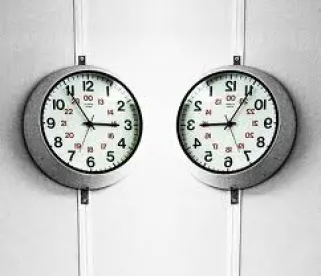On March 22, 2016, the United States Supreme Court decided Tyson Foods, Inc. v. Bouaphakeo, et al., No. 14-1146, a class action under Rule 23 of the Federal Rule of Civil Procedure (“Rule 23”) and a collective action under the Fair Labor Standards Act (“FLSA”). The issue on appeal involved the extent to which statistical evidence may be used as common proof of liability in class and representative actions. The Court specifically limited its ruling to the facts of that case, holding that a class plaintiff may use statistical sampling to determine classwide liability (which has been dubbed “trial by formula”) only when there is a scientifically viable way to extrapolate the results of a sample to any particular class member.
In this case, Peg Bouaphakeo, an employee at a Tyson’s pork processing plant, brought a class action and collective action on behalf of herself and other plant employees seeking compensation for time spent donning and doffing protective gear to perform their jobs. The employees contended they were either not paid for their donning and doffing time or were paid for a small, fixed amount of time that they argued was much less than the time required to actually don and doff their gear. Under both the FLSA and Iowa law, an individual employee bringing such an action needed to show that the time spent donning and doffing combined with the time spent working totaled more than 40 hours a week and that the employer did not pay for all of the work time. Before the district court, Tyson did not dispute whether the compensability of time spent donning and doffing was a question common to the class. It argued, instead, that because employees spent different amounts of time donning and doffing gear, some of which was less than the time for which they were paid, and some of which would not bring their time to 40 hours in a week even if added to their paid work hours, the case could not fairly be tried on a class basis.
To buttress their individualized representative evidence, Plaintiffs used an expert witness to perform a time and motion study on a sample of class members which revealed the average time employees spent donning and doffing in two different departments within the pork processing plant. The study reflected significant variability in the time employees in each department spent donning and doffing, but the expert used averages of the variation for each department to derive a value to gauge whether employees had been paid for all their time. The expert then used company records to see how much employees had actually been paid in work time, added the average don and doff time applicable to that employee’s department, subtracted the time for which they had been compensated for donning/doffing, if any, and then analyzed how much unpaid overtime the resulting figure generated. Notably, the employer did not challenge the expert’s methodology as scientifically invalid, nor did it propose a rebuttal expert who could show that the amount of time required to don and doff on average was actually lower than what the class expert indicated.
The district court certified the class under Rule 23 for the Iowa wage claims and found that the predominant issue was whether the don and doff time was compensable. Both the district court and the United States Court of Appeals for the Eighth Circuit held that the expert’s plan using average times was a sufficient basis to determine class damages because the employer had failed to keep records and this was the best available way to determine uncompensated time. The district court did not address the question of how any class judgment would be distributed, leaving that for separate proceedings to be resolved after the liability and classwide damages phase. Also, although the jury found for the plaintiffs at trial, the jury did not award the amount the class expert proposed based on his averaging method. Rather, the jury awarded about half that amount without providing any explanation of how it arrived at the lesser figure.
Justice Kennedy, writing for the 6-2 majority, affirmed the judgment based on the premise that, if any individual in the class brought a claim to recover for unpaid donning and doffing time, that person properly could have used the expert’s study to raise a reasonable inference of the amount of time he or she spent donning and doffing. In other words, an individual could argue to the jury that the average should be used to determine how much time he or she spent donning and doffing, and the jury could reasonably credit that the individual spent the average amount of time doing so. Justice Kennedy did not explain why a jury could properly rely on the average in an individual action. Nonetheless, Justice Kennedy explained that because each individual could have relied on the study in an individual case, aggregating the claims of thousands of individuals was also permissible, and whether the class expert’s study provided a reasonable estimate for any individual person was a factual question properly left to the jury. Justice Kennedy further explained that this ability for individuals to rely on the statistical evidence in their individual cases distinguished this case from Wal-Mart Stores, Inc. v. Dukes, 564 U.S. 338 (2011) where the Court held that the purported sample could not properly be used by any individual outside the sample to determine individual liability. In so holding, the Court foreclosed the argument often asserted by plaintiffs that the holding in Dukes applies only to Title VII cases. Instead, it seems the key question for whether a sample can be used is whether the results of the sample can fairly be extrapolated to any particular class member who is not in the sample. That will be easier to do in cases, like Tyson, where all the employees worked in one facility doing similar work. It could be very different if the class is larger and covers multiple different jobs in different facilities.
Justice Kennedy also reaffirmed that a defendant can attack the statistical evidence as not providing a fair basis to extrapolate conclusions as to individuals—something the employer apparently failed fully to do in this case. As such, the Court reemphasized the importance of challenging experts on the ground that they are not employing proper statistical methods.



 />i
/>i
